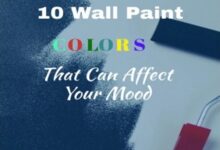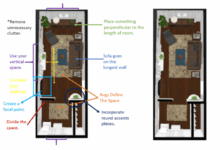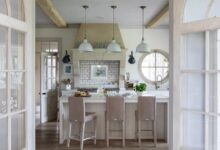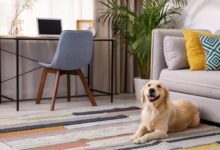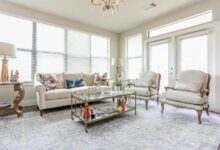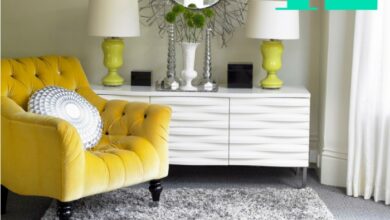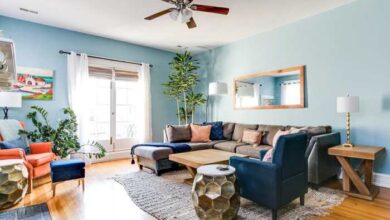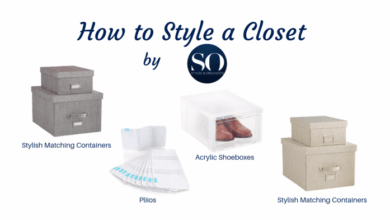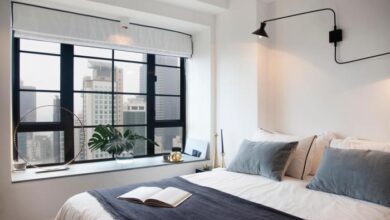Top Interior Design Trends To Watch In 2025
Top Interior Design Trends to Watch in 2025 invite us into an inspiring realm where creativity meets purpose. As we embrace a new era of interior design, these trends reflect our changing values, lifestyles, and the desire to create homes that nurture both our well-being and the environment.
In this exploration, we will delve into the emerging color palettes that evoke emotions, sustainable practices that honor our planet, and the integration of technology that simplifies our lives. Each trend offers a unique perspective on how we can shape our living spaces into havens of comfort, beauty, and functionality.
Emerging Color Palettes
The color palettes for 2025 are set to reflect a blend of serenity and vibrancy, capturing the essence of modern living with a touch of nature. Designers are embracing hues that evoke emotional connections while remaining stylish and functional. As we dive into these emerging trends, we will explore specific color combinations and their impact on our living spaces.
Popular Color Combinations
The anticipated color schemes for 2025 highlight an intriguing mix of warm and cool tones that can transform interiors. Understanding how to integrate these palettes can enhance ambiance and evoke specific feelings within a home. Here are some of the most popular combinations:
- Earthy Neutrals and Soft Greens: This combination brings the outdoors inside, creating a calming environment. Warm taupes blended with soft sage greens can be used on walls, textiles, and decorative elements to foster tranquility.
- Deep Blues and Rich Mustards: This bold pairing offers a sense of sophistication. Incorporating deep navy furniture with mustard yellow accents in cushions or art pieces can create a striking focal point in a room.
- Pale Pinks and Warm Grays: Perfect for spaces aiming for a cozy yet modern aesthetic, soft blush tones paired with warm grays provide a soothing backdrop that can be accented with textures through fabrics and decor.
- Vibrant Coral and Ocean Teal: This lively combination reflects the energy of coastal settings. Use coral in accent walls or decor items and pair with teal upholstery to infuse spaces with a cheerful vibe.
Psychological Impact of Colors
The choice of colors in interior design extends beyond visual appeal; it significantly influences our emotions and behavior. Each color palette can evoke certain feelings and responses, making them crucial in creating the desired atmosphere in living spaces.
“Colors are the smiles of nature.”
Leigh Hunt
Incorporating these emerging palettes can lead to various psychological effects:
- Earthy Neutrals and Soft Greens foster a sense of relaxation and connection with nature, enhancing feelings of peace and stability.
- Deep Blues and Rich Mustards promote creativity and energy, making them suitable for workspaces or creative corners.
- Pale Pinks and Warm Grays create a nurturing ambiance, ideal for bedrooms or reading nooks, encouraging rest and comfort.
- Vibrant Coral and Ocean Teal invite a sense of joy and liveliness, making them perfect for social areas like living rooms or entertainment spaces.
By thoughtfully selecting and combining these colors, designers can create harmonious environments that not only look beautiful but also support the well-being of those who inhabit them.
Sustainable Design Practices
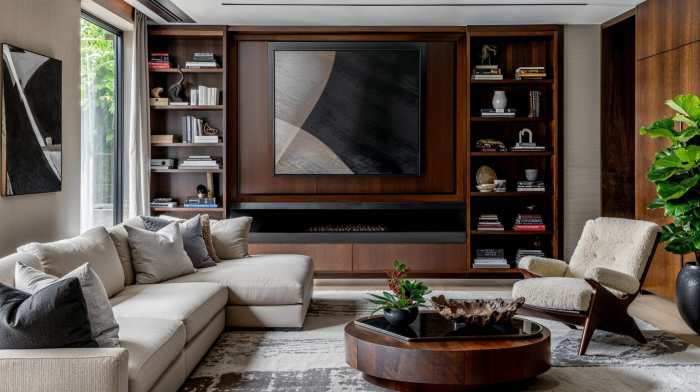
Source: decorilla.com
Sustainability is no longer just a buzzword in interior design; it has become a fundamental principle guiding the choices of designers and homeowners alike. As we move toward 2025, the importance of integrating environmentally-friendly practices into our living spaces becomes even more critical. This shift not only promotes a healthier planet but also enhances the quality of life for individuals and communities.The significance of sustainability in interior design trends for 2025 lies in its ability to address climate change while fostering a connection to nature.
Sustainable design practices help to minimize waste, improve energy efficiency, and use resources responsibly. Implementing these practices means creating spaces that are not only stylish but also contribute to a more sustainable future.
Eco-Friendly Materials
The selection of materials plays a vital role in establishing sustainable spaces. Choosing eco-friendly materials can significantly reduce a building’s carbon footprint and promote healthier living environments. Here are some examples of eco-friendly materials and their benefits:
- Bamboo: A rapidly renewable resource, bamboo grows quickly and can be harvested sustainably. It is incredibly strong and versatile, making it ideal for flooring, cabinetry, and furniture.
- Reclaimed Wood: Utilizing reclaimed wood reduces the demand for new timber and minimizes waste. It adds character and a sense of history to interiors while promoting responsible forestry practices.
- Recycled Metal: Using recycled metals in fixtures and furnishings decreases the need for mining and processing new materials, leading to lower energy consumption. Examples include aluminum and steel, which can be repurposed indefinitely.
- Low-VOC Paints: Volatile organic compounds (VOCs) found in traditional paints can be harmful to health. Low-VOC or VOC-free paints improve indoor air quality, making homes safer and more pleasant.
- Natural Fibers: Textiles made from natural fibers like organic cotton, linen, and jute are biodegradable and often require less energy to produce. They bring warmth and comfort into interiors while being kind to the environment.
Innovative practices are also emerging to enhance sustainable living spaces. These practices not only focus on the materials used but also on how spaces are designed and utilized. Integrating smart technologies, such as energy-efficient lighting and smart home systems, allows homeowners to monitor and control energy consumption, thereby reducing waste. Additionally, adopting biophilic design principles—incorporating plants and natural elements—fosters a deeper connection to the environment while enhancing mental well-being.Designing for longevity is increasingly essential, encouraging the creation of adaptable spaces that can evolve over time.
This approach promotes a circular economy, where materials and products are reused and recycled, minimizing waste. Embracing community-oriented design further fosters sustainability by creating spaces that encourage social interaction and collaboration, ultimately benefiting both individuals and the environment.
Biophilic Design Elements
Biophilic design is a concept that seeks to connect our living spaces with nature. In an era where urbanization often distances us from the natural world, this design philosophy is gaining traction. By integrating natural elements into our interiors, we can create environments that are not only aesthetically pleasing but also promote well-being.Biophilic design emphasizes the importance of incorporating nature’s elements in indoor spaces.
This approach can enhance the quality of life by fostering a sense of calm and connection to the outdoors. Natural light, greenery, and organic materials are just a few ways to achieve this concept in our homes and workplaces.
Integration of Natural Elements
Integrating natural elements into indoor spaces is essential for creating a biophilic environment. Several methods can be employed to enhance this connection with nature:
Natural Light
Maximizing natural light can be achieved through large windows and skylights. This not only brightens up a space but also influences mood and productivity.
Indoor Plants
Incorporating a variety of indoor plants can improve air quality and provide a sense of tranquility. Plants such as snake plants, pothos, and peace lilies are popular choices due to their low maintenance and air-purifying qualities.
Water Features
The soothing sound of water can create a calming atmosphere. Indoor fountains or aquariums can serve as focal points while promoting relaxation.
Natural Materials
Utilizing materials like wood, stone, and bamboo in furniture and decor can enhance the natural feel of a space. These materials bring warmth and texture, making interiors more inviting.
Nature-Inspired Colors
Painting walls in earth tones or using nature-inspired decor can help to echo the outdoors. Shades of green, brown, and blue can evoke feelings of serenity and connection to nature.
“Biophilic design not only enhances aesthetic appeal but also fosters a sense of well-being.”
Health Benefits of Biophilic Design
The health benefits associated with biophilic design are profound and well-documented. Research indicates that environments enriched with natural elements can lead to improved physical and mental health outcomes. Several key benefits include:
Reduced Stress Levels
Exposure to natural elements can significantly lower stress levels, promoting relaxation and tranquility. Studies show that individuals who work in biophilic environments report lower stress and higher satisfaction.
Enhanced Creativity
Natural surroundings can stimulate creativity and problem-solving abilities. For instance, employees in offices with plants and natural light have been found to be more innovative.
Improved Air Quality
Incorporating plants can enhance indoor air quality, reducing pollutants and allergens. This leads to fewer health issues such as respiratory problems, which are often exacerbated by indoor environments.
Increased Productivity
Workspaces designed with biophilic elements often see a rise in productivity. Employees working in such environments tend to focus better and have higher engagement levels.In sum, biophilic design is not merely a trend but a pivotal approach to creating healthier, happier, and more connected indoor environments.
Multi-functional Spaces
As our lifestyles evolve, the demand for spaces that can adapt to various needs becomes increasingly prominent. Multi-functional spaces embody this flexibility, allowing homeowners to maximize their living areas without sacrificing style or comfort. In 2025, we will see designs that encourage creativity and efficiency, transforming how we live and interact with our environments.A well-designed multi-functional space can cater to different activities, such as working, entertaining, and relaxing, all within the same area.
To achieve this, it’s vital to select furniture and decor that seamlessly transition between uses. By incorporating versatile pieces, homeowners can create a harmonious balance that supports their daily routines and enhances their quality of life.
Furniture and Decor for Flexibility
The foundation of a multi-functional space lies in the choice of furniture and decor. Furniture should serve multiple purposes while maintaining aesthetic appeal. A few examples include:
- Sofa beds: A stylish sofa that transforms into a bed provides comfortable seating during the day and a cozy sleeping space at night, perfect for unexpected guests.
- Expandable dining tables: A table that can be extended for larger gatherings allows for intimate family meals while also accommodating social events.
- Storage ottomans: These versatile pieces offer both seating and hidden storage, helping to keep clutter at bay.
- Wall-mounted desks: A foldable desk provides a dedicated workspace that can be tucked away when not in use, making it ideal for small apartments.
In designing multi-functional spaces, it is essential to consider the layout and flow of the area. Zoning techniques, such as using area rugs to delineate different functions or employing furniture arrangements that promote interaction, can enhance the usability of the space.
Successful Multi-functional Room Designs
Numerous innovative designs exemplify the concept of multi-functional living. Here are a few notable examples that inspire creativity:
- Open-plan living: Many modern homes feature open floor plans that combine the kitchen, dining, and living areas into one cohesive space. This layout fosters connection and versatility, allowing for seamless transitions between activities.
- Convertible furniture: Innovative designs, such as Murphy beds that fold into the wall or coffee tables that raise into dining tables, maximize the functionality of smaller spaces.
- Home office integration: Incorporating a dedicated workspace within a living room or bedroom can be achieved by using stylish dividers or bookcases, allowing for privacy while adding to the room’s design.
These examples illustrate that multi-functional spaces do not have to compromise on comfort or style. By embracing versatility, homeowners can create environments that reflect their lifestyles and adapt to changing needs.
Smart Home Integration
As we embrace the future of interior design, the integration of smart home technologies stands at the forefront of innovation. This trend not only enhances convenience but also elevates the aesthetic appeal of spaces. In 2025, we can expect smart technology to be seamlessly woven into the fabric of our homes, influencing both functionality and style. The latest advancements in smart home systems include integrated voice-activated assistants, smart lighting solutions, and advanced security systems that can be controlled remotely.
These technologies not only simplify daily tasks but also offer endless possibilities for personalization and automation. Smart home features can be designed to blend seamlessly with interior aesthetics, ensuring that technology complements rather than dominates the living space.
Latest Technologies in Smart Home Systems
The following technologies are set to revolutionize how we experience our homes, enhancing both practicality and elegance:
- Voice-Activated Assistants: Devices like Amazon Echo and Google Nest Hub allow homeowners to control various aspects of their home using simple voice commands. This technology can manage lighting, temperature, and even entertainment systems, all without lifting a finger.
- Smart Lighting: Smart bulbs and lighting systems can be adjusted for brightness and color temperature through apps or voice control. This flexibility allows homeowners to create tailored atmospheres that enhance the overall aesthetic of their spaces.
- Home Automation Systems: Systems like SmartThings or Hubitat integrate multiple devices, allowing for coordinated control of security, climate, and entertainment, providing a cohesive user experience.
- Smart Security: Advanced surveillance cameras, smart door locks, and motion detectors can be monitored and managed from anywhere, offering peace of mind without compromising on design.
- Smart Appliances: Refrigerators, ovens, and washers that connect to the internet enable users to control and monitor their home appliances remotely, integrating technology into everyday tasks.
Seamless Integration of Technology into Interior Aesthetics
Integrating smart technology into interior design requires a thoughtful approach to maintain the beauty of the space. Here are some strategies to consider:
- Hidden Wiring: Concealing wires and cables helps maintain a clean aesthetic while allowing for the functionality of technology. Utilizing wall panels or built-in cabinetry can help achieve this look.
- Design-Friendly Devices: Selecting smart devices that complement the decor, such as stylish smart speakers or decorative light fixtures, enhances the visual appeal of the space.
- Custom Control Panels: Installing custom touch panels that match the interior design can create a cohesive look while providing control over smart home features.
- Color and Material Choices: Choosing smart devices in colors and finishes that match or accentuate existing decor helps integrate technology seamlessly while enhancing the overall design.
Implications of Smart Home Features on Everyday Living
The smart home revolution has profound implications for daily life, transforming how we interact with our living spaces. These features bring convenience, efficiency, and sustainability to the forefront. Homeowners can automate routines, such as adjusting the thermostat when leaving for work or setting lights to dim at bedtime.
Smart home technology not only streamlines daily routines but also personalizes the living experience, fostering a deeper connection between inhabitants and their environment.
Moreover, the integration of energy-efficient smart devices contributes to sustainability by reducing energy consumption. Smart thermostats, for instance, learn user preferences and adjust heating and cooling based on occupancy, leading to cost savings and a reduced carbon footprint. In essence, smart home features enhance the quality of life, making everyday tasks easier while promoting a harmonious living environment.
Vintage and Retro Influences
As we move into 2025, the allure of vintage and retro styles continues to captivate the hearts of designers and homeowners alike. These timeless aesthetics not only evoke nostalgia but also bring warmth and character into modern living spaces. Retro influences can be seen in various aspects of interior design, from furniture choices to decorative accents, creating a unique blend of old and new that resonates with many.The resurgence of vintage styles is not merely a trend; it reflects a cultural shift towards appreciating the past while embracing contemporary creativity.
In 2025, we will witness an increasing number of homes adorned with pieces that tell a story, instilling a sense of history within modern design frameworks. Revitalizing vintage decor allows homeowners to celebrate uniqueness, transforming their spaces into personal narratives.
Revitalizing Vintage Decor
Incorporating vintage decor into contemporary design can breathe new life into any home. The following examples showcase how vintage elements can enhance modern interiors:
- Mid-Century Modern Furniture: Pieces like Eames chairs or teak sideboards provide a sleek and stylish appeal, seamlessly blending with contemporary aesthetics.
- Retro Lighting Fixtures: Vintage pendant lights or table lamps from the 60s and 70s add character and warmth, serving as focal points within a room.
- Art Deco Accents: Incorporating geometric patterns and metallics can highlight elegance and sophistication in modern spaces.
- Vintage Textiles: Using retro fabrics, such as florals or bold patterns, in cushions or curtains can add a touch of whimsy and comfort.
- Antique Mirrors: An ornate vintage mirror can create depth and luxury, enhancing the light and feel of a space.
The cultural significance of incorporating retro elements into modern homes is profound. These elements act as a bridge between generations, sparking conversations and connecting individuals to their heritage. Spaces that feature vintage decor often reflect personal stories, making them more inviting and relatable. Adopting vintage styles not only fosters creativity and individuality in design but also encourages sustainable practices by giving new life to previously cherished items.
“Vintage decor allows us to celebrate the past while creating spaces that feel both personal and connected to our shared history.”
In 2025, the fusion of vintage influences with contemporary design will not only enhance the aesthetic appeal of our homes but will also foster a deeper appreciation for the enduring beauty of the past.
Minimalism with a Twist
Modern minimalism is a design philosophy that champions simplicity, focusing on the essentials while creating a sense of tranquility and spaciousness. As we move into 2025, this principle evolves to embrace more personality and warmth, blending functionality with unique personal touches. The minimalist aesthetic now invites a sense of comfort, making spaces feel less stark and more lived-in.The concept of minimalism has shifted from merely stripping down to the bare essentials to incorporating curated elements that reflect personal style.
This year, we see adaptations that encourage homeowners to add character to their minimalist spaces. By strategically selecting decor items, one can infuse life and vibrancy into previously stark environments.
Enhancing Minimalist Spaces
To create a more engaging atmosphere within a minimalist framework, consider the following suggestions for adding character:
- Textured Fabrics: Introduce soft textiles such as wool throws or linen cushions. These materials add warmth and tactile contrast to a clean, modern aesthetic.
- Statement Pieces: Opt for a singular, bold artwork or a uniquely designed furniture piece that serves as a focal point, drawing the eye and sparking conversation.
- Organic Shapes: Incorporate furniture and decor with soft, flowing lines instead of rigid geometric shapes. This can soften the overall look and enhance comfort.
- Natural Elements: Use plants or wooden features to bring nature indoors, fostering a sense of calm and balance that counters the starkness of minimalism.
- Personal Touches: Display personal photographs or objects collected from travels, creating a narrative that reflects your journey while remaining understated.
In balancing functionality with aesthetics, modern minimalism emphasizes that every item should serve a purpose while contributing to the overall beauty of the space. This delicate equilibrium allows for a clean look without sacrificing comfort or style. The intentional choice of each element ensures that the space remains uncluttered, yet inviting.
“Minimalism is not about eliminating the things you love, but about loving the things you have.”
Textured Surfaces
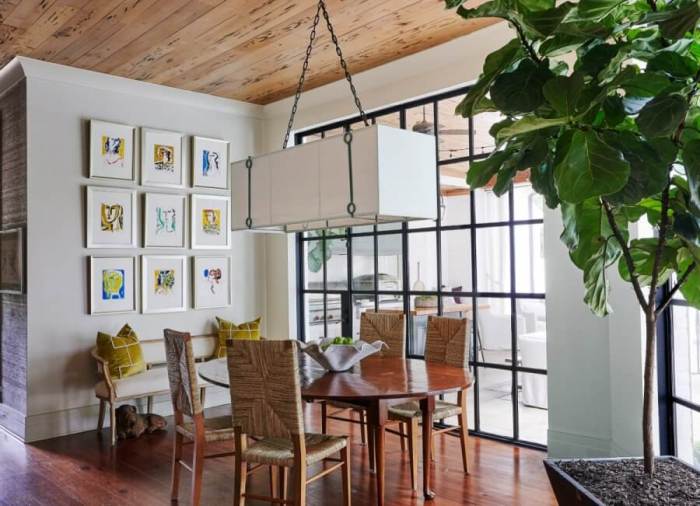
Source: styleblueprint.com
The trend of incorporating textured surfaces in interior design is gaining momentum, transforming the way spaces feel and look. Textures create a sensory experience that enchants the eye and invites touch, adding depth and warmth to any room. As homeowners and designers seek to break away from minimalism, textured materials offer a refreshing approach that enhances the ambiance and individuality of a space.Textured surfaces can range from rough to smooth, soft to hard, and everything in between.
They create visual interest and impact by allowing light to play across the variations in materials. Examples of popular textured surfaces include reclaimed wood, woven fabrics, stone finishes, and intricate tile work. These materials can turn a mundane wall into a captivating focal point or transform flat surfaces into inviting tactile experiences.
Examples of Textured Materials
The following textured surfaces are becoming increasingly popular in contemporary design, each contributing uniquely to the atmosphere of a room:
- Reclaimed Wood: Used for accent walls or furniture, reclaimed wood adds a rustic charm. Its unique knots and grains tell a story, creating a warm and inviting environment.
- Woven Fabrics: Textiles such as jute, linen, or cotton in upholstery or wall hangings introduce softness and warmth, enhancing comfort while adding visual dimension.
- Stone Finishes: Natural stone surfaces, such as slate or marble, not only provide durability but also add an organic element that connects the indoors to nature, offering a grounding effect.
- Textured Tiles: Tiles with three-dimensional designs or varying glazes can create stunning backsplashes or feature walls, capturing light and reflections to enrich the room’s character.
- Concrete: Polished or rough, concrete surfaces deliver a modern, industrial vibe. Its starkness can be softened through the combination with softer textures, creating balance within the space.
The tactile experience of these materials significantly impacts the ambiance of a room. Touch plays a crucial role in how we perceive our surroundings; textured surfaces invite interaction, encouraging occupants to connect with their environment. As light hits these diverse surfaces, it creates shadows and highlights that further enhance the visual appeal. This interplay fosters a sense of comfort and intimacy, making spaces feel more personal and inviting.
By thoughtfully incorporating textured surfaces, interiors can evoke emotions that resonate deeply with those who inhabit them.
Artisanal and Handmade Elements
Incorporating artisanal and handmade elements into interior design creates a unique narrative within a space, allowing it to reflect individual stories and cultural heritage. These handcrafted pieces often possess a soul that mass-produced items lack, making them invaluable in personalizing a home. By embracing the beauty of imperfection found in handmade decor, we not only enhance aesthetic appeal but also support local artisans and sustainable practices.Sourcing artisanal pieces that resonate with personal style can be an enriching journey.
Visiting local craft fairs, artisan markets, or specialized online platforms dedicated to handmade goods opens up a world of creativity and originality. It’s important to look for items that not only fit the overall design theme but also evoke emotions and memories. Establishing a connection with the artist or understanding the story behind the piece adds depth to the decor.
Integrating Handcrafted Items into Design Themes
Successful integration of handmade elements can elevate various design aesthetics. Here are key ways to blend these unique pieces into different themes:In a bohemian-inspired space, consider incorporating woven baskets, macramé wall hangings, or hand-painted ceramics that reflect an eclectic mix of cultures. The warmth and texture of these items enhance the overall coziness of the environment.For a modern minimalist setting, opt for a single statement piece, such as a hand-sculpted vase or a unique wooden coffee table.
These items can serve as focal points that draw attention without overwhelming the space.Rustic design benefits from handcrafted wooden furniture or artisanal textiles, such as quilts or embroidered linens. These pieces can seamlessly connect with the natural elements typically found in rustic themes, such as exposed beams and stone accents.In an industrial-themed interior, introducing metalwork items like handcrafted light fixtures or wall art can create a striking contrast against raw materials.
The uniqueness of artisanal metal pieces adds character and depth to the otherwise stark elements of industrial design.
“Handmade items tell a story, bringing warmth and character that transforms a house into a home.”
By thoughtfully selecting and integrating handmade decor elements, interiors can become a true reflection of personal style and values, celebrating craftsmanship and individuality.
Global Influences
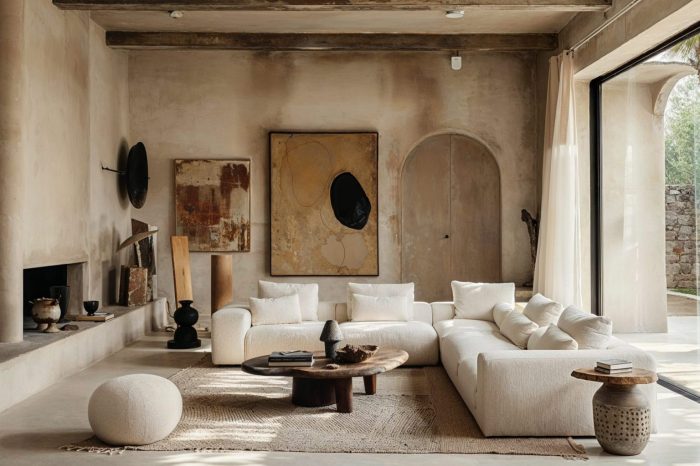
Source: essentialhome.eu
As we move into 2025, global design trends are significantly shaping interior aesthetics, bringing diverse cultural narratives into everyday spaces. These influences not only enhance the visual appeal but also foster a deeper connection between inhabitants and their environments. The blending of various styles allows for a richer, more inclusive approach to design that resonates with a broader audience.A striking aspect of global design is the way cultural elements can be seamlessly integrated into local interiors, creating a harmonious dialogue between different aesthetics.
This blending fosters a unique identity, allowing personal expression while respecting global traditions.
Cultural Elements in Local Designs
Incorporating cultural elements into local designs creates a tapestry of influences that celebrate uniqueness while promoting unity. Here are some examples of how this can be achieved:
- Textiles and Patterns: Using traditional fabrics like Moroccan textiles or Indian block prints can add warmth and character to modern interiors, enriching the space with stories and history.
- Art and Artifacts: Displaying African masks or Asian ceramics not only serves as decorative art but also as conversation starters that reflect a global appreciation for craftsmanship.
- Furniture Styles: Incorporating Scandinavian minimalism with Japanese functionality can create a balanced aesthetic that is both practical and visually appealing.
- Color Schemes: Adopting vibrant colors from Latin American cultures can invigorate neutral spaces, creating a lively atmosphere that celebrates diversity.
The dialogue between local and global styles is increasingly prevalent in contemporary interiors. Designers are now more inclined to combine regional materials with international influences, resulting in spaces that tell a global story while maintaining local authenticity.
“Design is a universal language that transcends borders, allowing us to communicate and connect through the spaces we inhabit.”
Examples of this dialogue include the use of sustainable local materials alongside global design concepts, creating eco-friendly spaces that reflect both cultural heritage and modern innovation. As homeowners and designers continue to embrace this fusion, we can expect to see interiors that are not only aesthetically pleasing but also culturally rich and meaningful.
Summary
As we conclude our journey through the Top Interior Design Trends to Watch in 2025, it is clear that the future of design is bright and full of possibilities. By embracing these innovations, we can transform our homes into reflections of who we are and what we cherish, allowing personal expression to flourish in every corner.
FAQ Insights
What are the most popular colors for 2025?
Colors like soft earth tones, vibrant greens, and muted blues are expected to dominate, promoting tranquility and connection to nature.
How can I make my home more sustainable?
Consider using eco-friendly materials, energy-efficient appliances, and incorporating plants to enhance air quality and aesthetics.
What is biophilic design?
Biophilic design emphasizes the human connection to nature by integrating natural elements like plants, light, and water into interior spaces.
How do I create a multi-functional space?
Choose versatile furniture, like foldable tables and storage ottomans, to maximize space while ensuring it meets various needs.
What are smart home features?
Smart home features include automated lighting, smart thermostats, and security systems that enhance convenience and energy efficiency.
How can I incorporate vintage elements in my home?
Mix vintage furniture or decor pieces with modern elements to create a unique and inviting atmosphere.
What defines modern minimalism?
Modern minimalism focuses on simplicity and functionality, using clean lines and a limited color palette while allowing for personal touches.
Why are textured surfaces trending?
Textured surfaces add depth and interest to spaces, creating a tactile experience that enhances the overall ambiance.
How do I find artisanal decor?
Look for local markets, craft fairs, or online platforms that specialize in handmade items to discover unique pieces that resonate with your style.
What are global design influences?
Global design influences incorporate elements from various cultures, allowing for a rich blend of styles that reflect diverse traditions and aesthetics.
